Despite having grown up in Syracuse, New York, I hadn't been to the Buffalo area since I was 5 years old, when my family visited my uncle in the town of Lockport and crossed the border into Canada to visit Niagara Falls and Marineland.
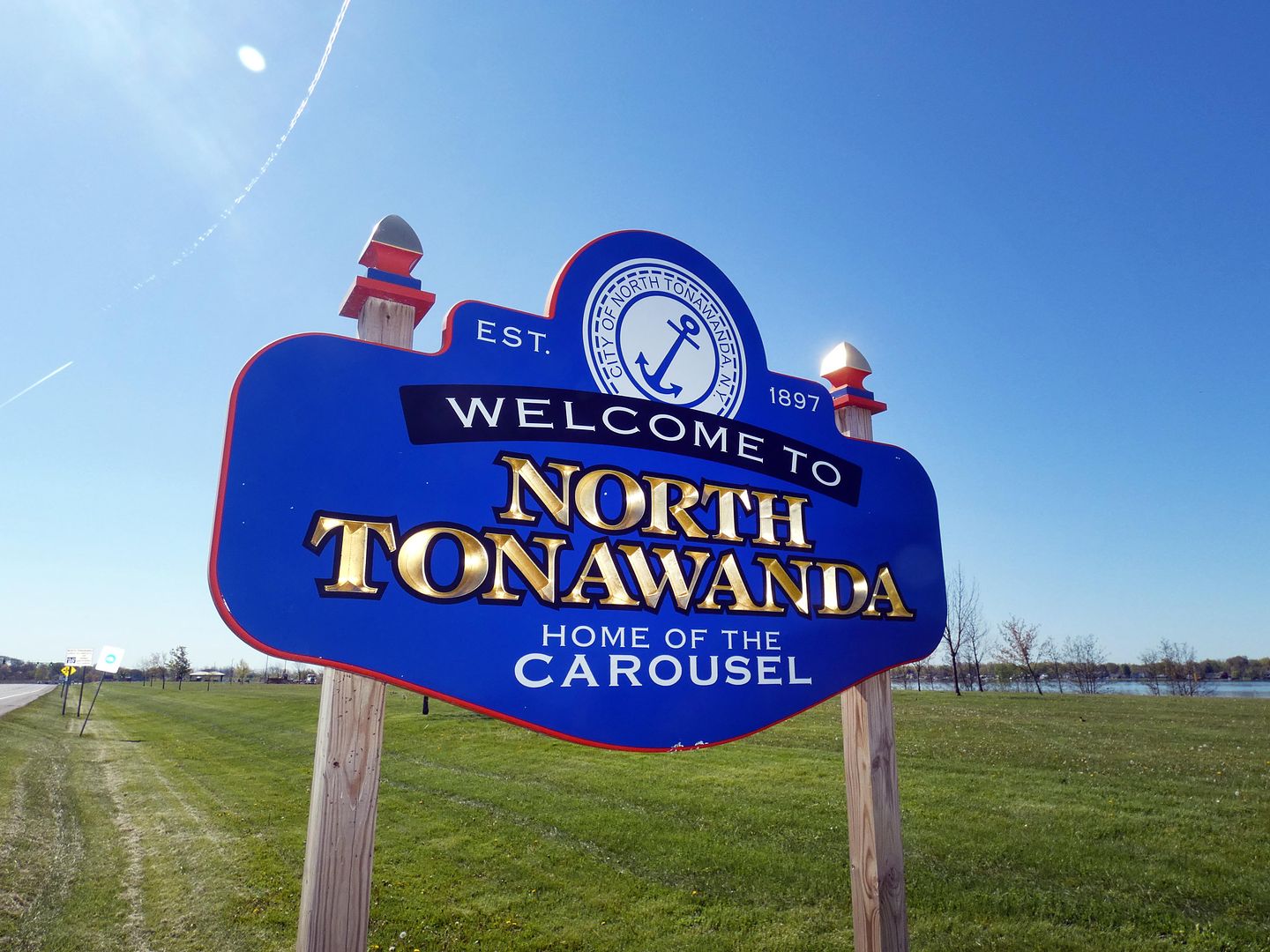
So, last week, after having flown in an airplane for the first time since the beginning of the pandemic to visit Syracuse for the first time in years, I decided to avoid a layover at JFK Airport and fly direct into Buffalo-Niagara Airport—conveniently located near a bucket-list attraction for me, the Herschell Carrousel Factory Museum in the town of North Tonawanda.
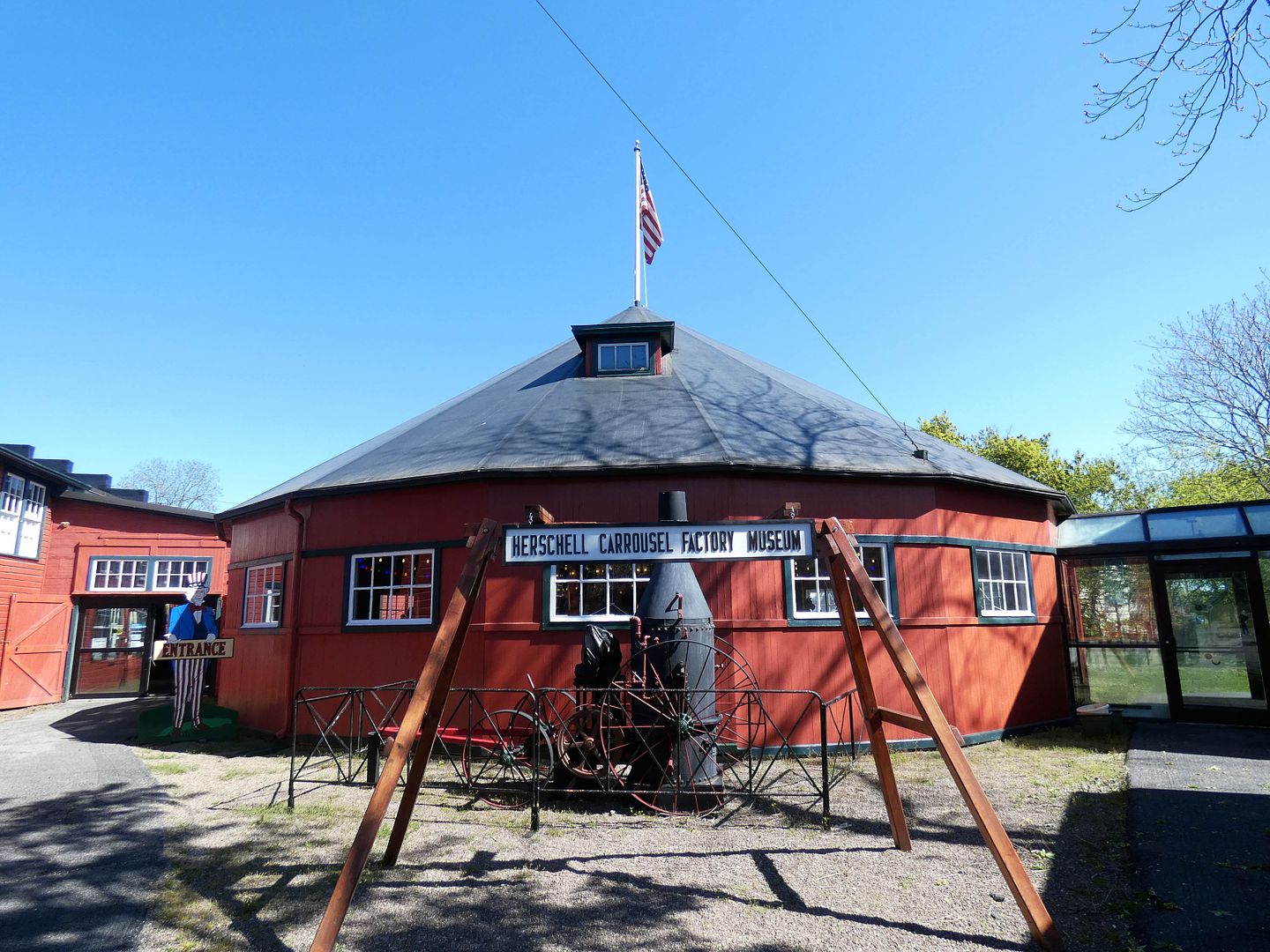
I'll share the factory tour and museum exhibits soon—but I couldn't wait to post about the antique carousel located in the museum's rebuilt roundhouse, which originally functioned as the Herschell factory assembly and testing site. (Unfortunately, the original roundhouse collapsed in a snowstorm in 1984, leaving only one original wall remaining.)
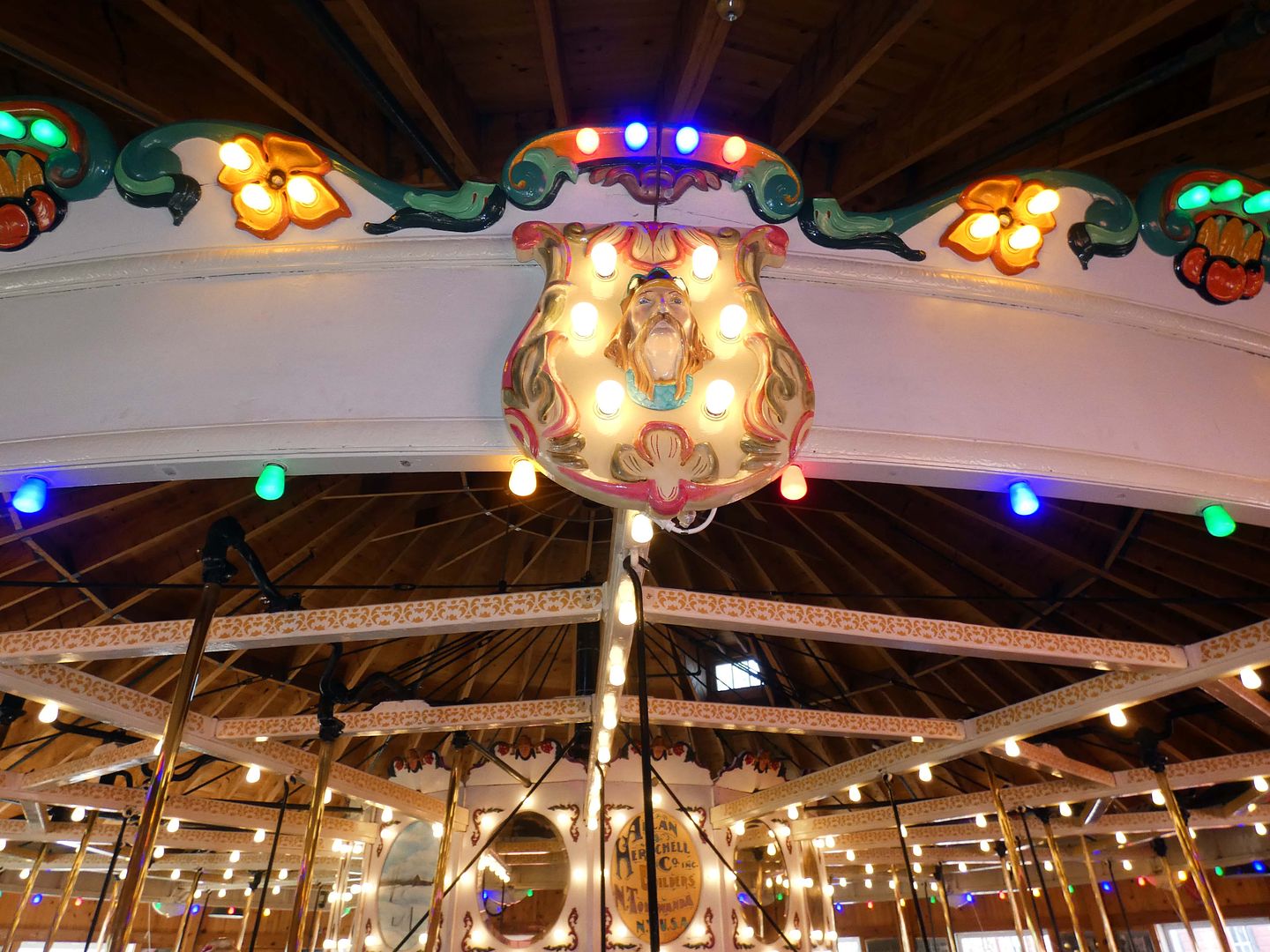
With paid museum admission, you get two tickets to ride one of the first carousels to come out of the factory—the circa 1916 Allan Herschell #1 Special, acquired by the museum in 1982 in advance of its grand opening.
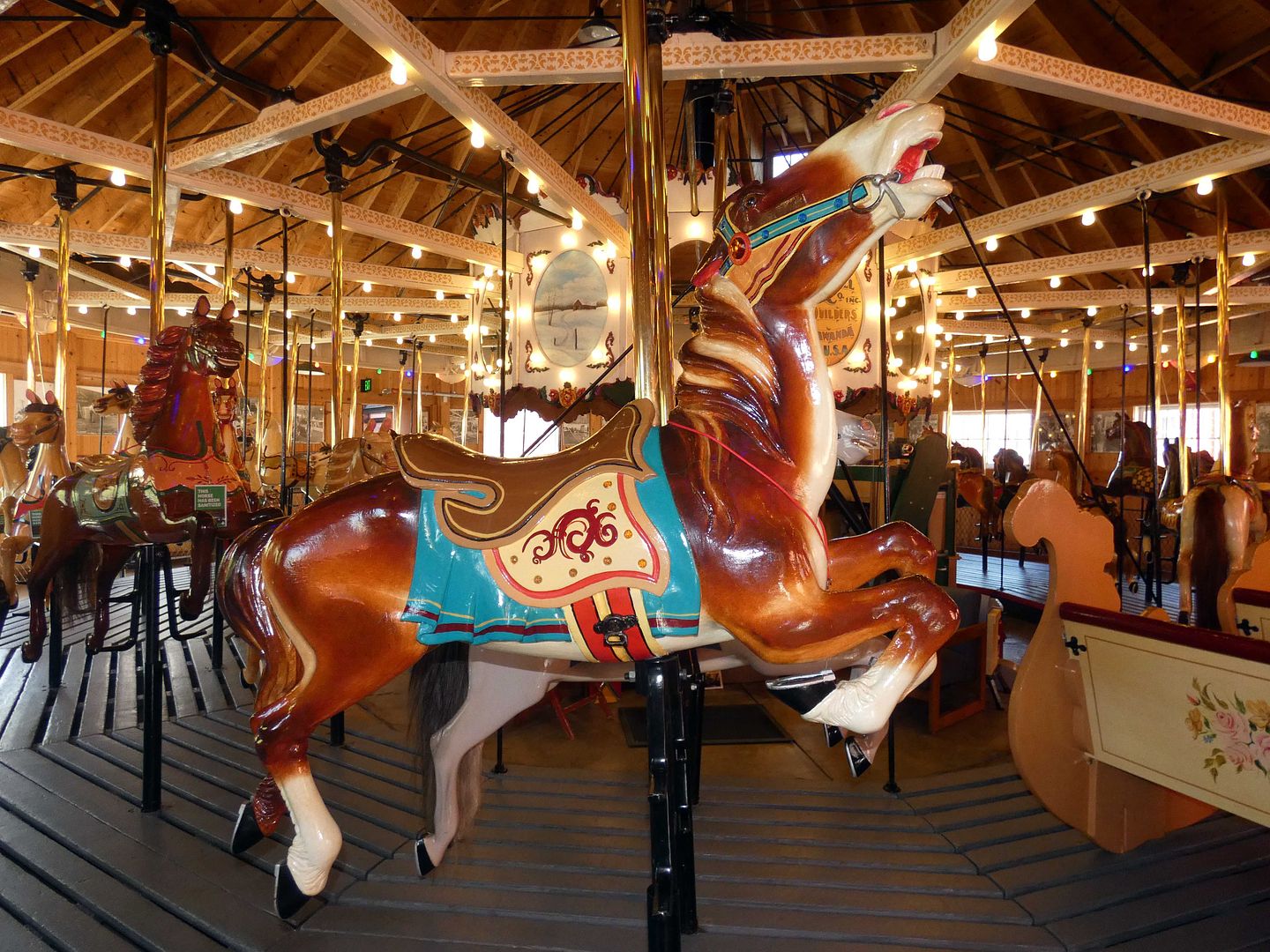
Although it was designed as a portable or "road"-style carousel (like one in a traveling carnival), it spent much of its early life in just two locations.
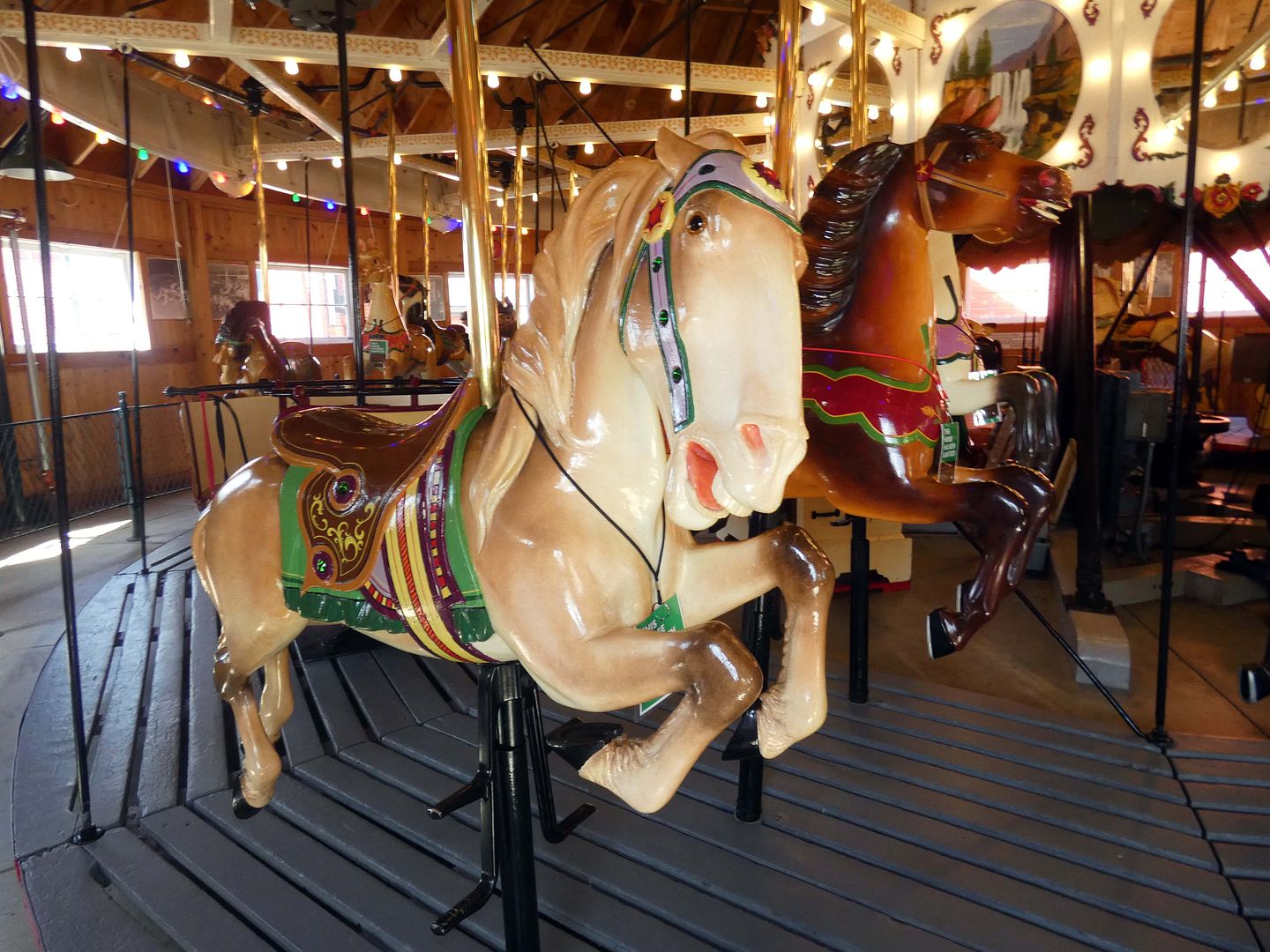
Today, the carousel features three rows of 36 jumping horses in two different styles. The inner two rows feature Herschell-Spillman Co. horses that were actually carved around the turn of the century for the carousel's earlier iteration—a two-row carousel at Springbank Park in London, Ontario, Canada.
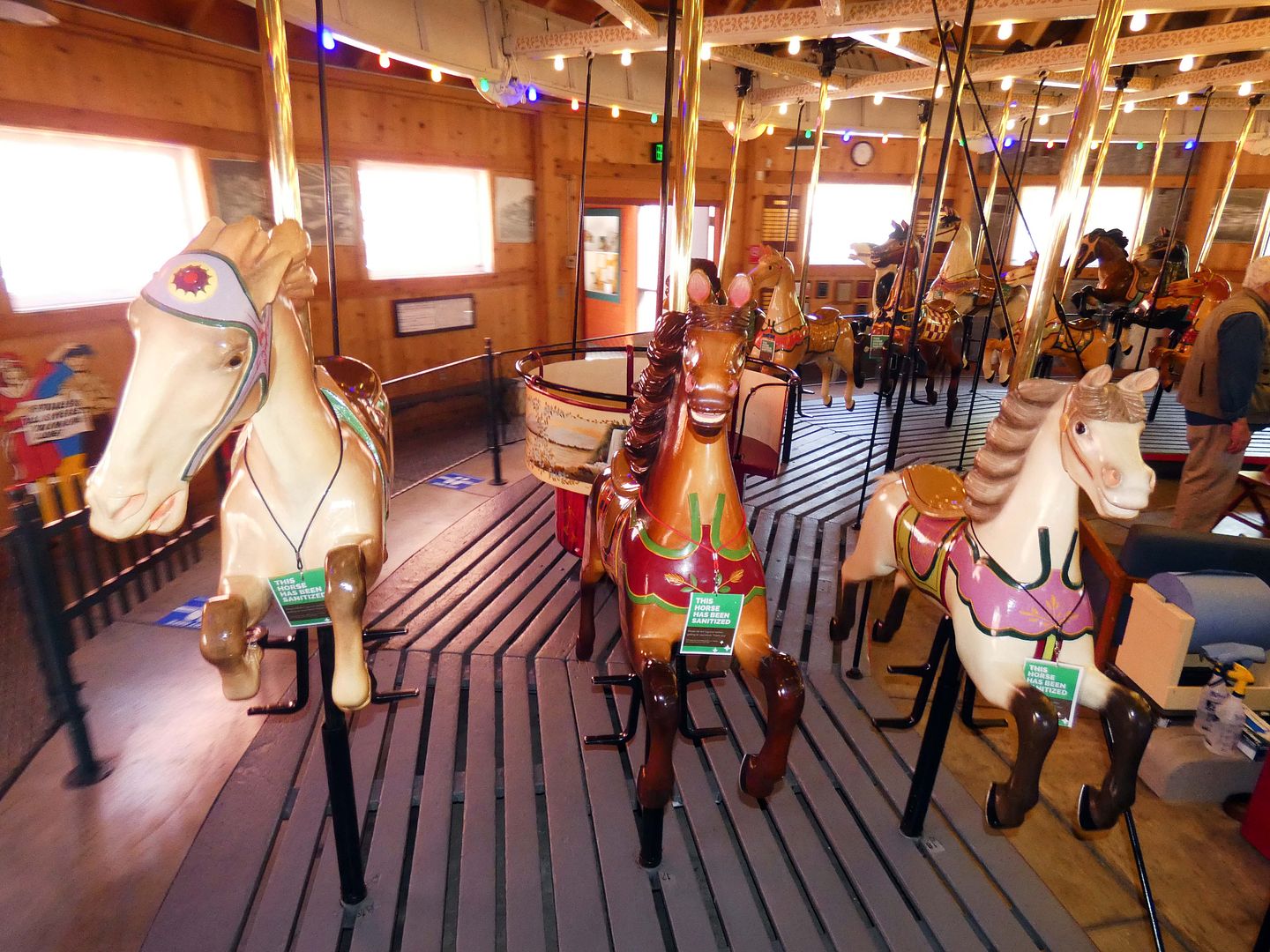
In the 1910s, the carousel moved to (the now defunct) Burlington Beach Park in Hamilton, Ontario—where its operators decided to expand the carousel and widen the platform. So now, the old Herschell-Spillman middle and inside row horses jump alongside newer Herschell Company horses on the outside row.
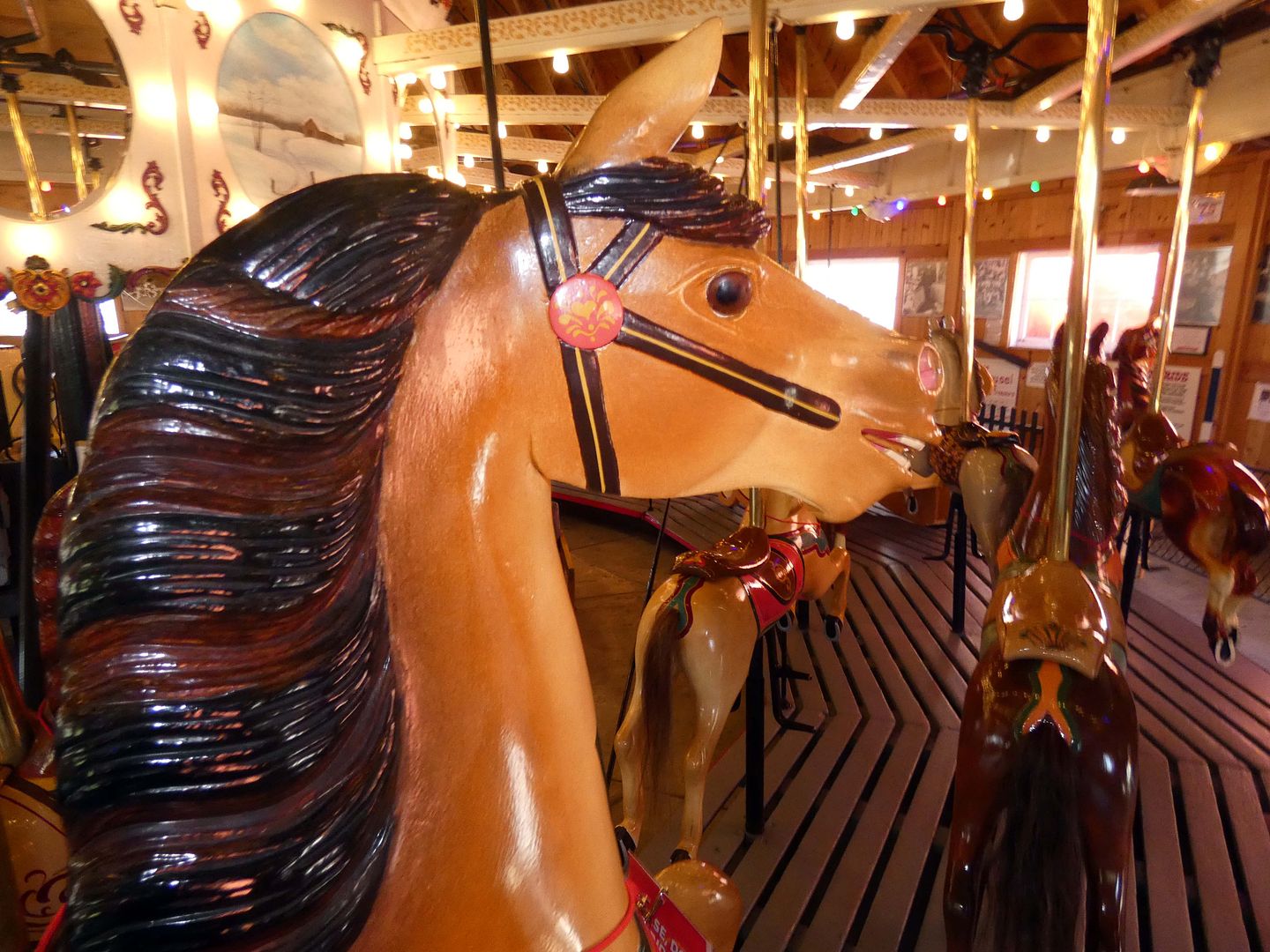
You can tell the difference because the inner row horses sport friendlier faces...
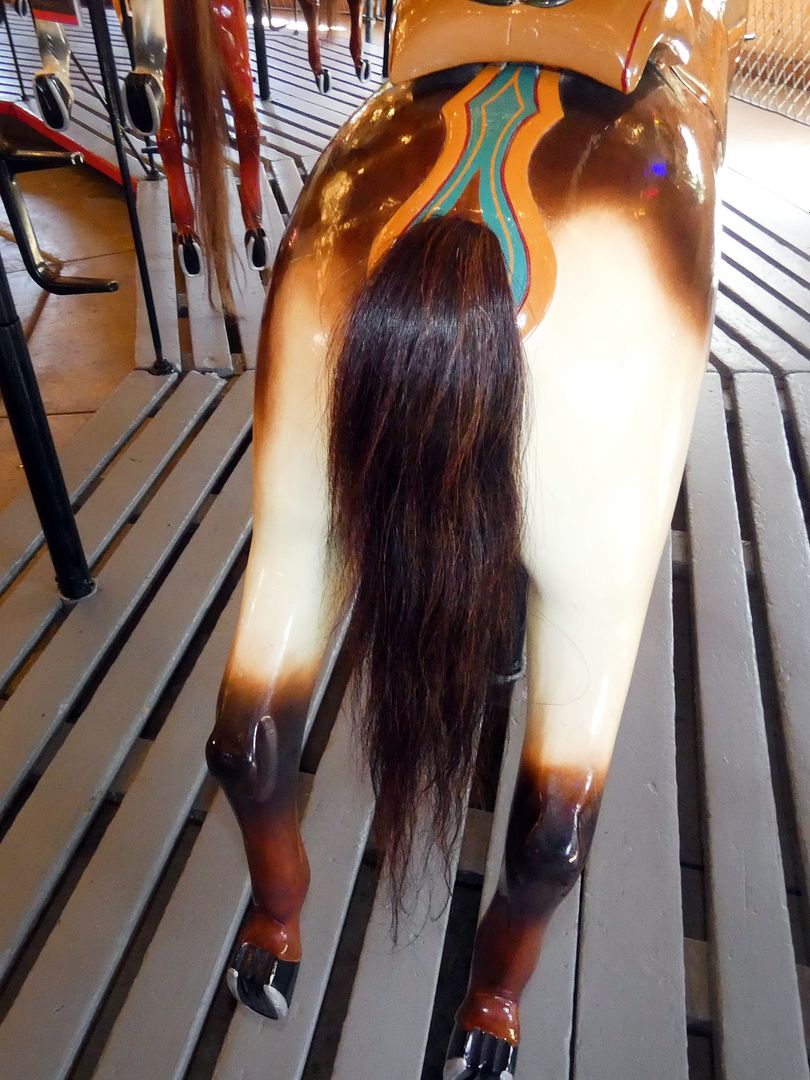
...real horsehair tails...
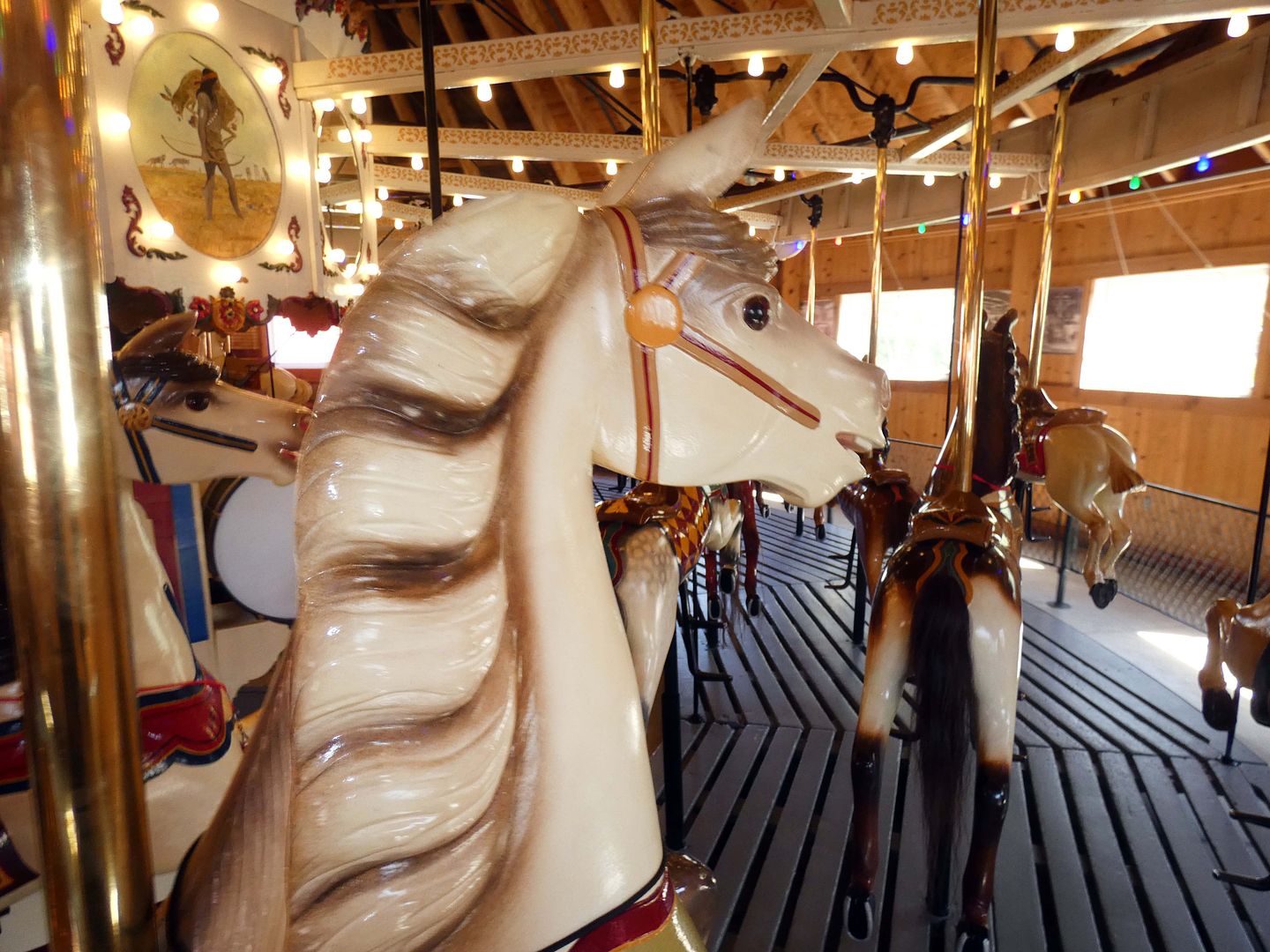
...and perked-up ears.
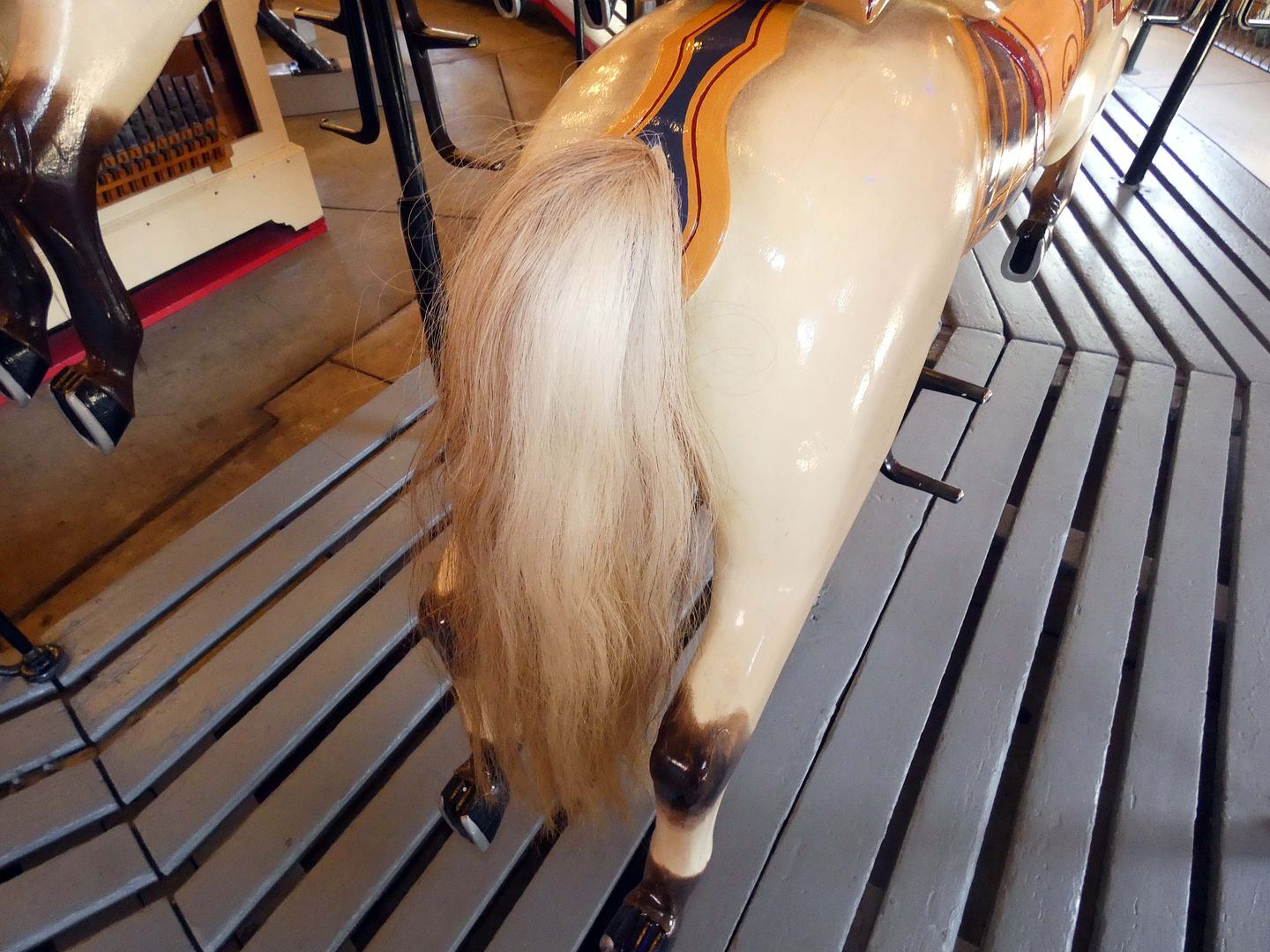
But by 1916, the carving style had evolved to become more dramatic...

...with flattened-back ears that wouldn't break off...
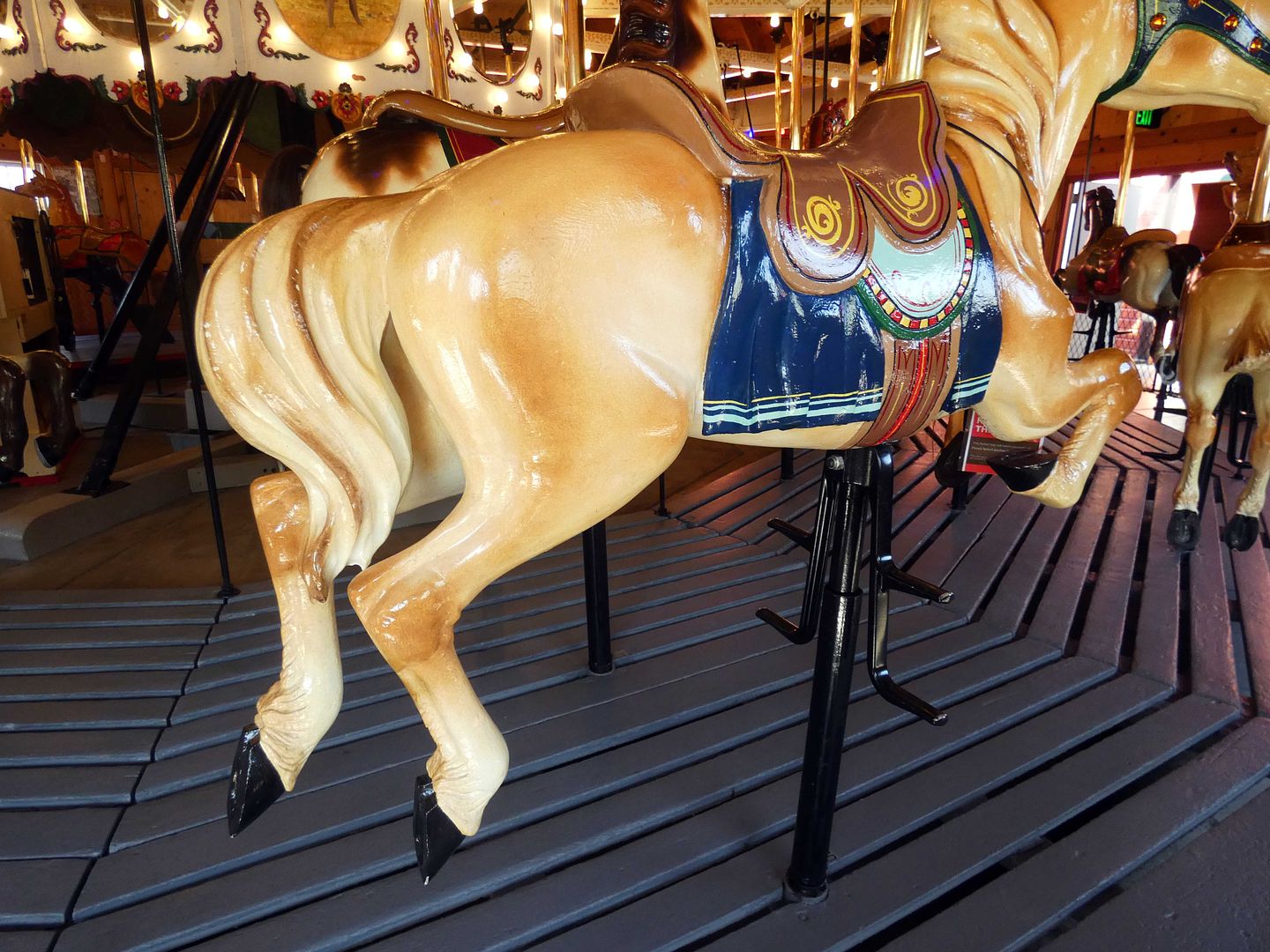
...and carved wooden tails behind each of the horse's carved saddles.
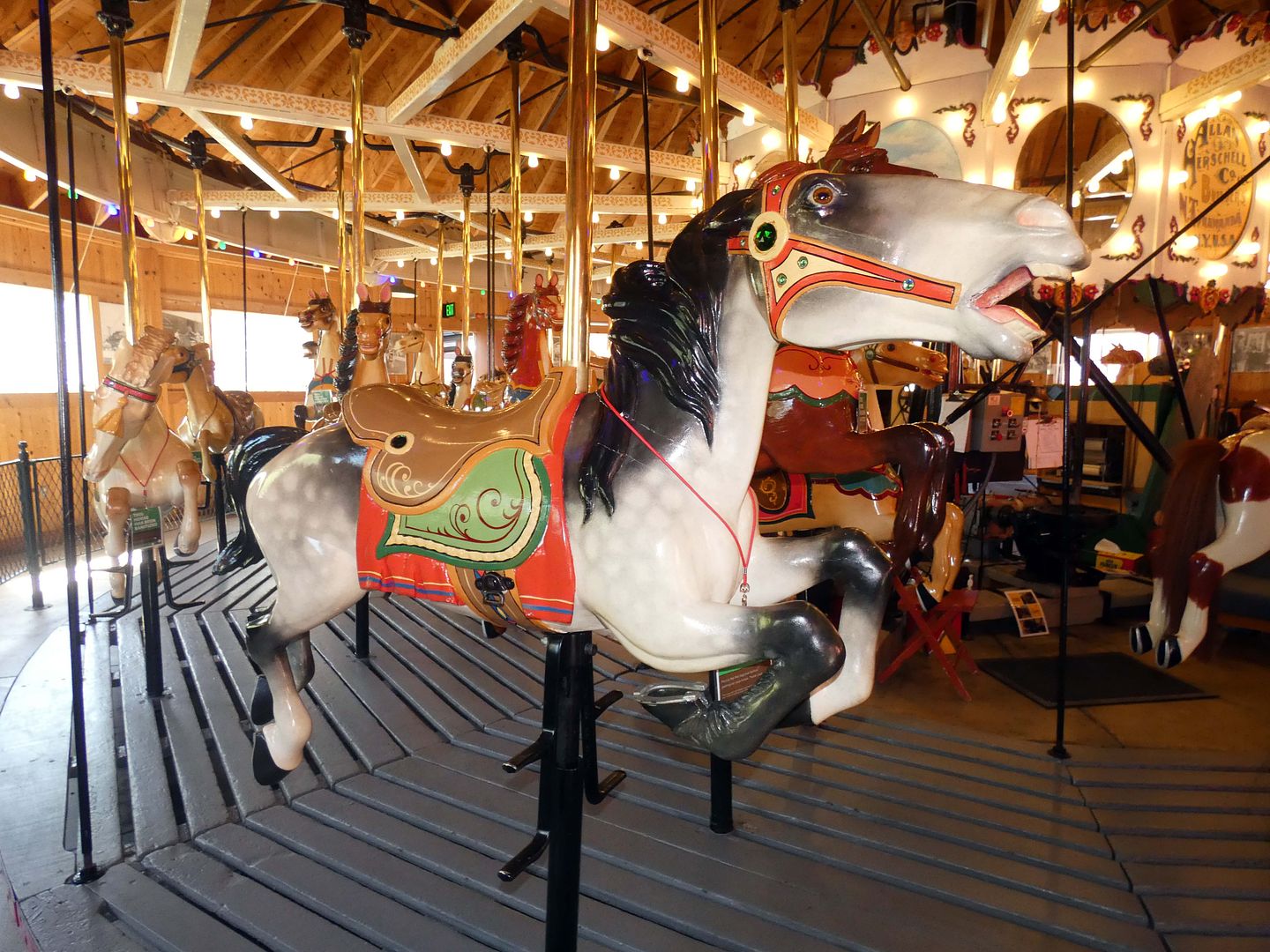
The outer horses are all adorned with decorative gems and realistic-looking eyes...
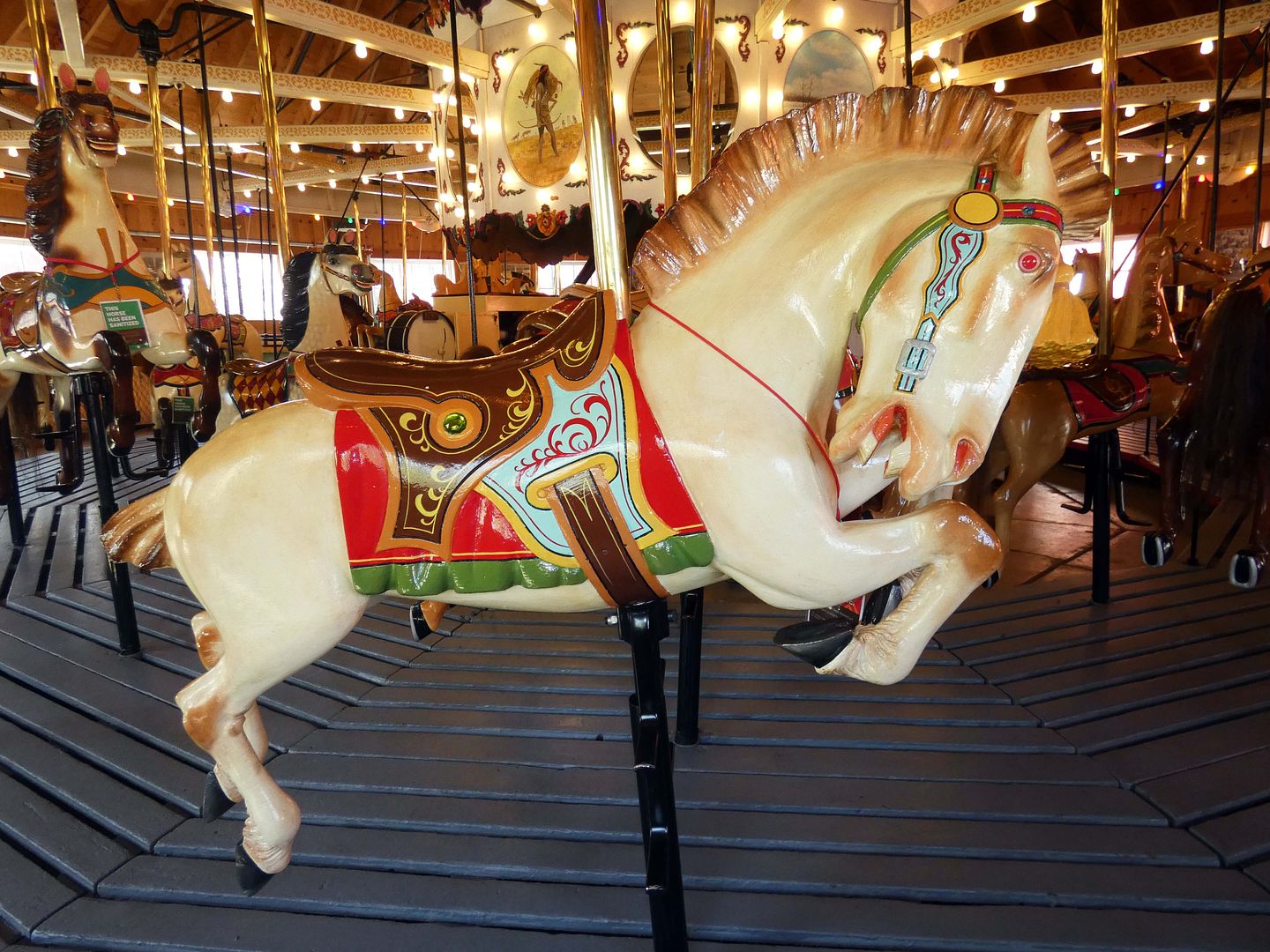
...in all different colors of manes and coats...

...with no two looking the same.
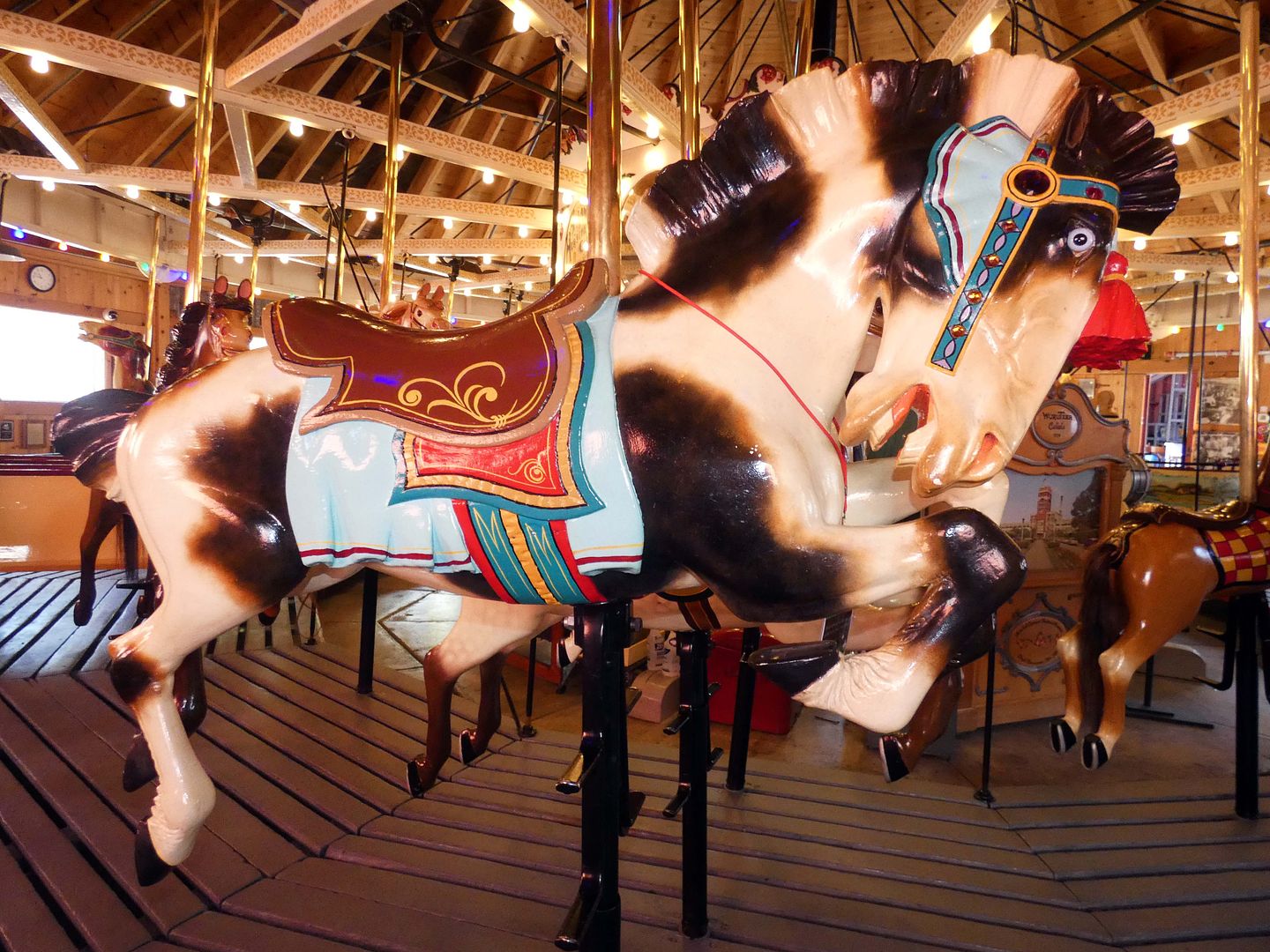
Of course, one of them is the "Trojan"-style horse, with its roached mane.
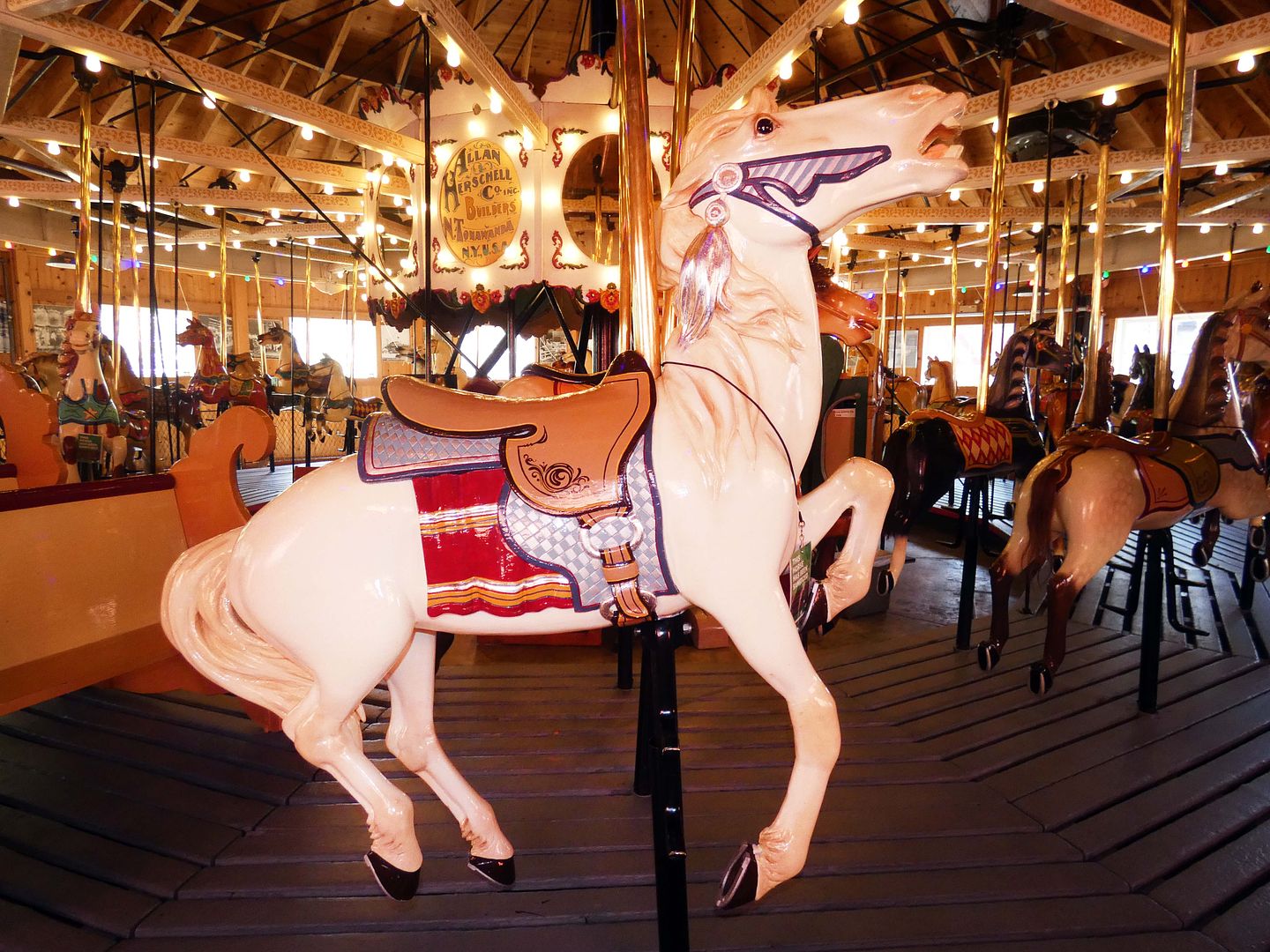
This carousel had been missing its lead horse, a white stallion named "King Billy," from 1982 until 2007—when all of the horses were finally reunited. The private owner who'd sold the carousel to the museum out of his storage unit had held onto that one horse for 25 years before letting go of it.
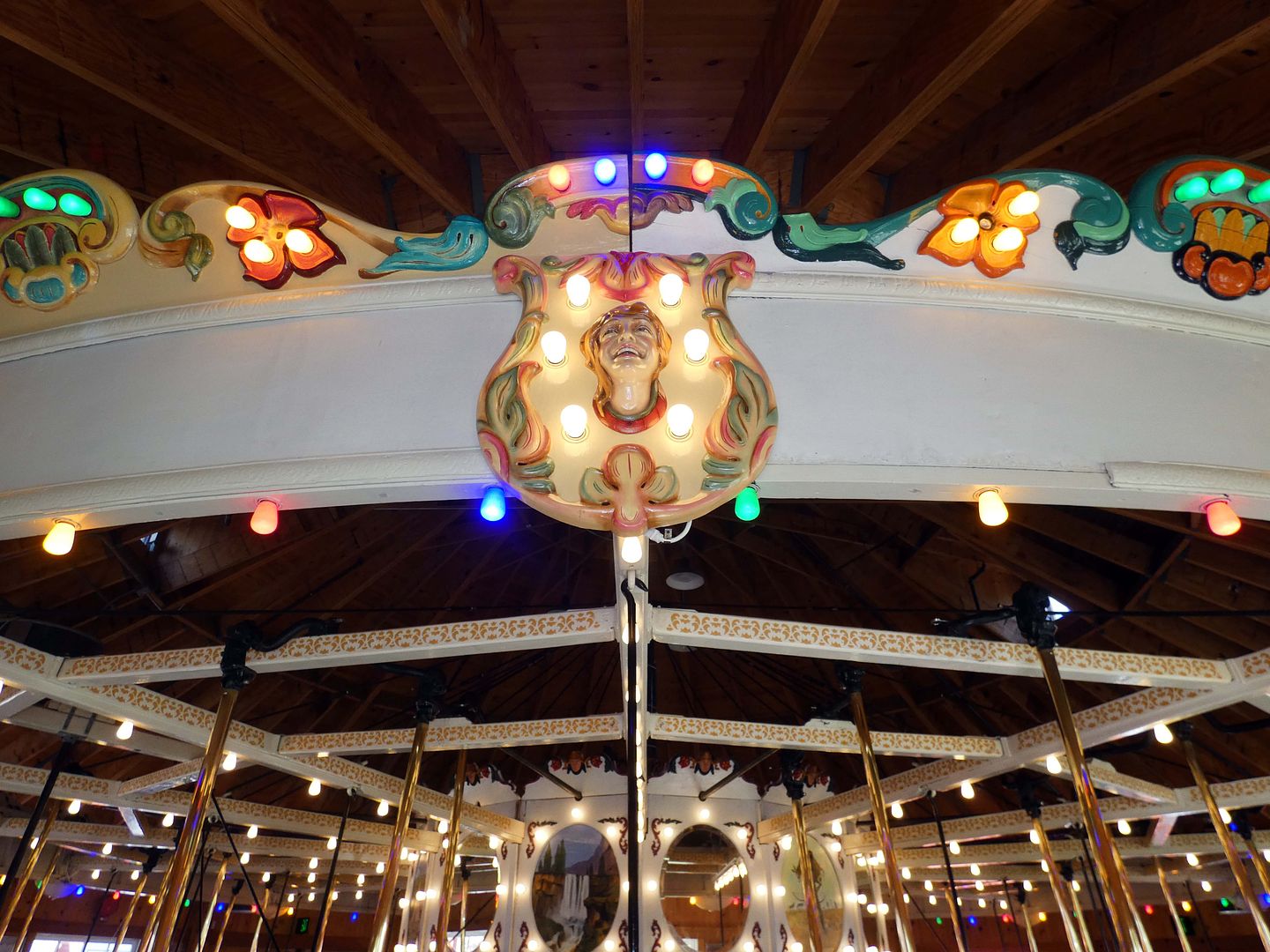
Now the carousel is complete—with over 580 lights, multiple shields and painted rounding boards (and mirrors), and a circa 1929 Wurlitzer "Caliola" band organ to play the music. (Wurlitzer also had a factory in North Tonawanda.)
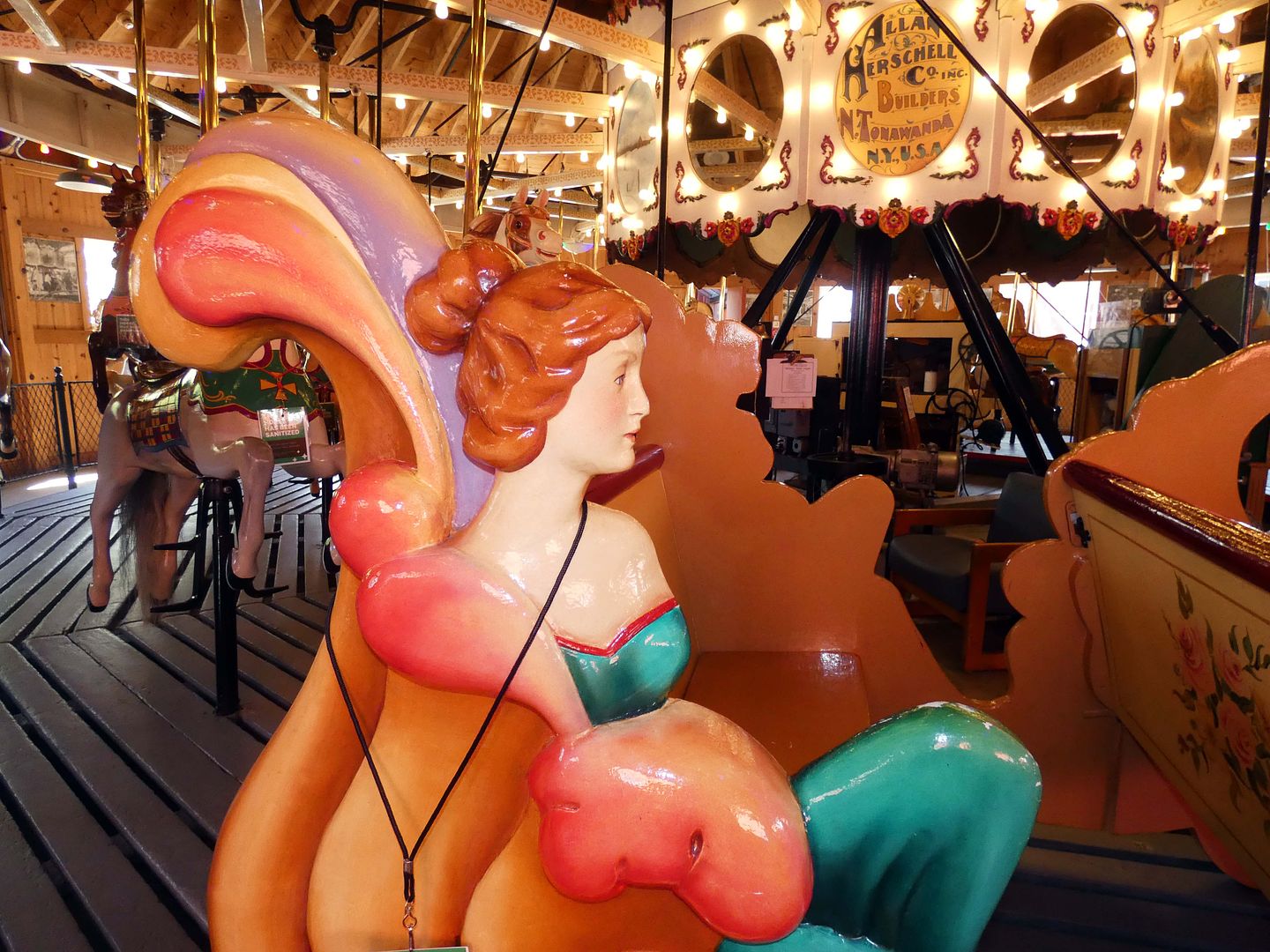
Instead of two chariot benches, it has just one...

...plus a spinning "lovers tub," which was designed for adults (presumably those who are romantically inclined towards one another).
I used both my tickets to ride solo on wooden horses—two different ones of course, though both in the outer row.
Because, as the museum slogan states, "Once around is never enough!"
Related Posts:

No comments:
Post a Comment